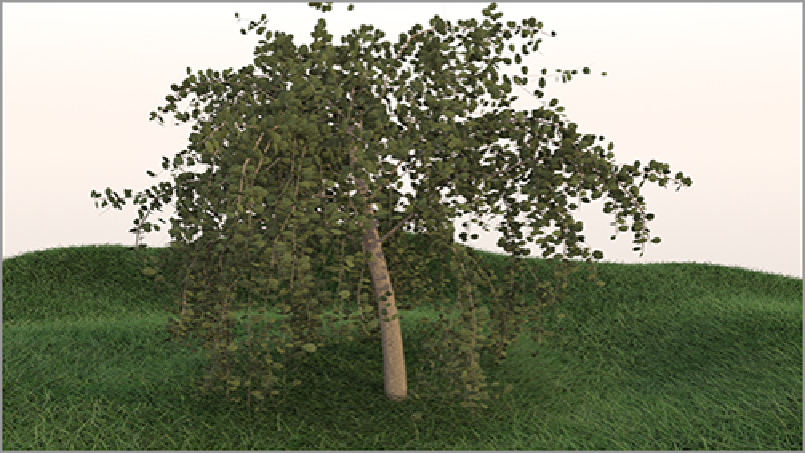Graphics Reference
In-Depth Information
Replicators can also be used to place leaves on trees. For this example, load one of the trees without
leaves from the mesh presets (Meshes
⇒
Organic
⇒
Trees). Also add a leaf from the Organic presets. By
using a replicator with the leaf and the surface generator that is attached to the tree mesh preset, you can
quickly create a complete tree. It is important to note that the trees also contain a weight map that has high
values on the branches and no value on the rest of the tree. This weight map is used to modulate particle
density. Using the rock example as a guide, you can adjust the leaves on the tree in a variety of ways. A
finished example of a tree is shown in
Figure 11-35
.
Figure 11-35:
A replicator tree with leaves attached to the weight map-driven branches.
Designing Lighting Scenarios for Outdoor Scenes
Many of the lighting principles covered up to this point apply to the lighting task at hand. The real necessity
with outdoor lighting falls in the balance between direct (sunlight) and indirect (environmental) lighting.
The use of an environment as the sole light source can provide a quick solution for creating a moderately
effective lighting scheme using only indirect light. Physical Sun and Sky simulations are another way of
making a good outdoor scene by primarily using direct lighting. As usual, a combination of the two styles
can provide the best results and feature quality lighting, fast render times, good reflections, and a clean back-
drop for final presentation of the scene.
HDR Environments
There are many kinds of high dynamic range environments available. Most HDRs are either spherical maps
(showing a complete 360º view of the photographed scene) or light probes (chrome sphere showing the en-
vironment behind the camera). A large selection of free images is available online. A simple web search will
yield a fair range of resources. There are also commercial kits available that provide excellent quality if you

